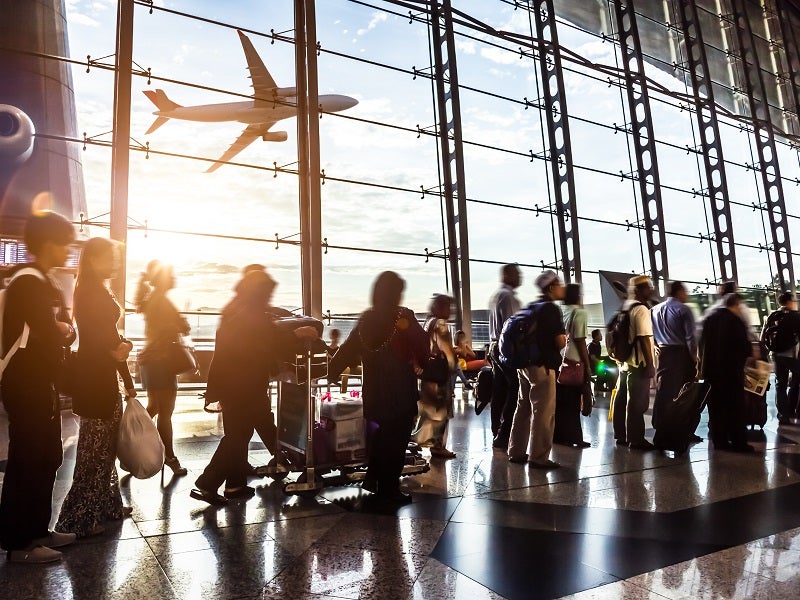
For Olivier Jankovec, director general of Airports Council International (ACI) Europe – an industry trade association that publishes traffic statistics – 2018 was a year of truly “remarkable resilience” across Europe’s airport sector.
The strong performance came despite considerable difficulties facing European airports including: a lack of capacity; ATC disruptions; airline industry consolidation, and holidaymakers increasingly returning to non-EU Mediterranean destinations, such as Turkey and Egypt.
A “dynamic” year
While overall passenger traffic growth was slightly down on 2017 levels, performance remained “dynamic” according to ACI Europe, with the total number of passengers using Europe’s airports reaching a new record of 2.34 billion.
Airports in eastern and southern parts of the European Union posted the best performance, with Vilnius, Bratislava, Riga, Budapest, Tallinn, Malta, Milan Malpensa and Luxembourg among those enjoying double-digit growth.
Of Europe’s top five busiest airports, Frankfurt achieved the highest growth of 7.8% and Istanbul-Atatürk the second best at 6.4%.
A number of regional airports also posted impressive passenger traffic gains in 2018, reflecting “their agility and success in attracting airlines and developing air connectivity,” according to ACI Europe. Poznan (+33.7%), Sibiu (+32.2%), Memmingerberg (+26.5%) and Seville (+24.9%) came out on top.
How well do you really know your competitors?
Access the most comprehensive Company Profiles on the market, powered by GlobalData. Save hours of research. Gain competitive edge.

Thank you!
Your download email will arrive shortly
Not ready to buy yet? Download a free sample
We are confident about the unique quality of our Company Profiles. However, we want you to make the most beneficial decision for your business, so we offer a free sample that you can download by submitting the below form
By GlobalDataUnderlying this growth, according to several aviation experts interviewed by Airport Industry Review, is airline capacity expansion and an improving economic situation in Europe, which has stimulated both corporate and leisure demand.
“General economic growth sees air transport growth,” says Andrew Charlton, an aviation analyst. “Continued pressure on fares helps make flying attractive and as society realises it likes lots of short breaks, rather than a single holiday, the growth goes up.”
Analysts say things could have been better for the sector, however. Last October, the credit agency Moody’s changed its outlook for European airports from positive to stable, amid signs of deceleration.
“The change in outlook […] reflects the expectation that European airports would benefit from positive, although slower passenger growth,” says Raffaella Altamura, a senior analyst at the ratings agency.
Capacity challenges
A key problem facing the industry is a lack of capacity to manage passenger growth using existing facilities and staff levels. According to a 2018 study by EUROCONTROL, the continent’s airports will be unable to process as many as 160 million passengers by 2040.
“By 2030 we expect 58,000 daily movements in the sky, as opposed to the 33,000 we have on average per day today,” says Gerd Pontius, executive director and founder of the aviation consultancy Prologis. “We could not even handle the 33,000 last summer.”
Solving this problem will require greater operational efficiency, utilising the excess capacity of smaller airports and increased investment. But pouring money into airports isn’t straightforward, Charlton points out, because of the industry’s “very ‘lumpy’ nature and … risk of investing in the teeth of a sudden downturn.”
“Over the long-run – and investing in airports is a long-run play – growth has always continued to expand, but in the short-term it is more complex,” Charlton adds. “Add to that the short-term nature of airline operational decisions and their investment profile and it is a funny mix.”
Coming headwinds
Alongside capacity constraints, airports are facing increasing industrial unrest, airline strikes and ATC disruptions. In total, passengers experienced 10.6 million minutes of delays through June, July and August last year – the equivalent of over 20 years – according to Airlines for Europe (A4E), a trade association that represents leading airline groups.
Consolidation among airlines is also putting airports on the back foot. Last year the market share of the so-called ‘big five’ – Lufthansa Group, Ryanair, IAG, Air France-KLM and easyJet – continued to increase, while a string of other airlines faced bankruptcy.
“Over time, the airline consolidation is going to see fewer, stronger airlines, which will be good for Europe … but will mean that the airlines will become stronger in their negotiations with airports,” says Charlton. “In economic terms, the airlines will have an increasing countervailing in their negotiations.”
Uncertainties related to Brexit have also contributed to diverging growth paths for UK airports – where some of the weakest ACI Europe results were recorded – compared to operators in continental Europe, says Altamura of Moody’s.
“This mainly reflects a more subdued UK macroeconomic environment, as shown by the deceleration in GDP growth rates, increasing headwinds to consumer spending, as well as persistently weak business investment,” she says.
“In addition, the weakness in Sterling has also negatively affected UK-based demand for air travel. More importantly, however, there are some residual uncertainties in respect of air traffic arrangements between the UK end the EU at the date of exit.”
Another interesting year ahead
In 2019, Altamura expects airports in continental Europe to report traffic growth in the range of 3%-5%, while UK airports, excluding Heathrow, will report traffic growth in the range of 2%-4%.
Pontius, the aviation consultant, foresees another year of poor flight punctuality and regularity – “possibly even worse than 2018” – and increasing economic problems for the continent’s smaller airports. For Charlton, while economic indicators remain “ambivalent” in 2019, one thing is for sure: “It will be another interesting year.”







